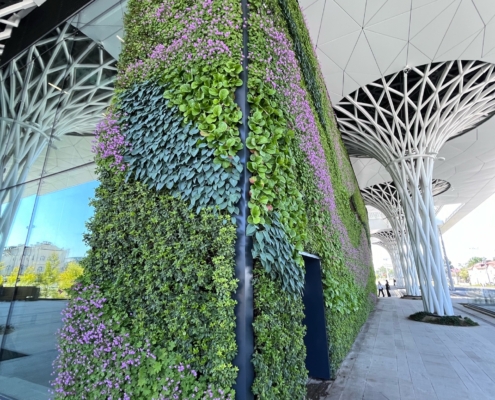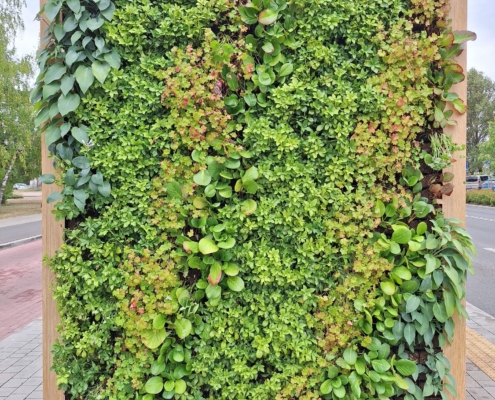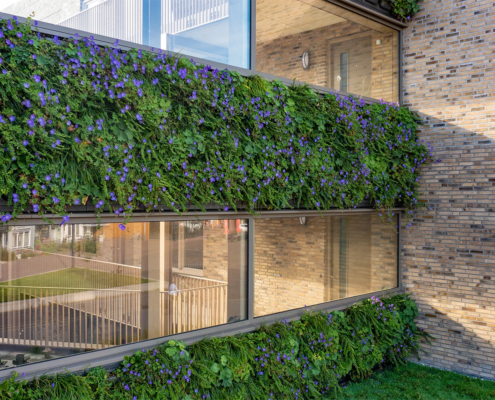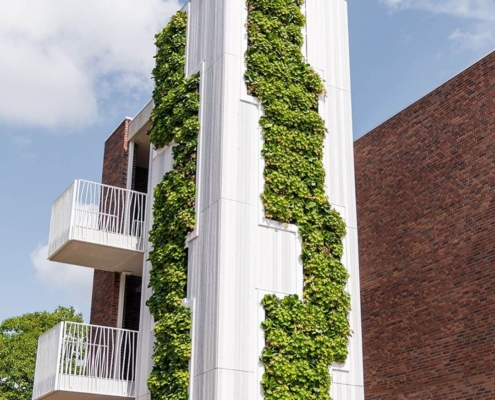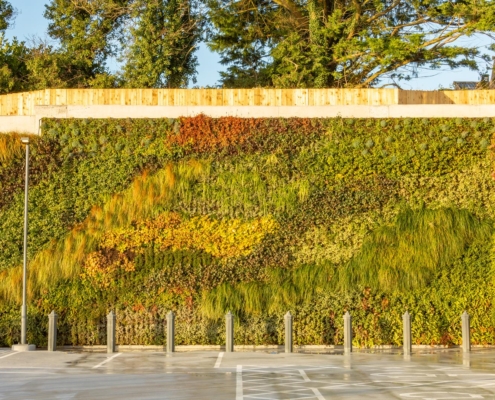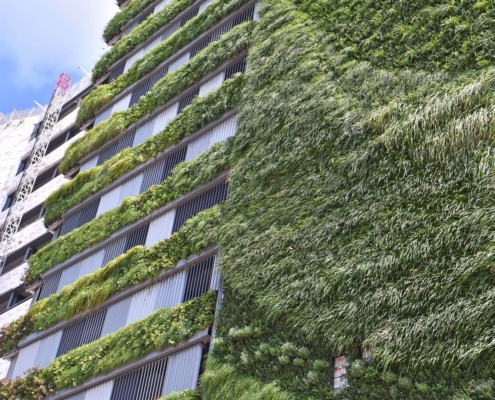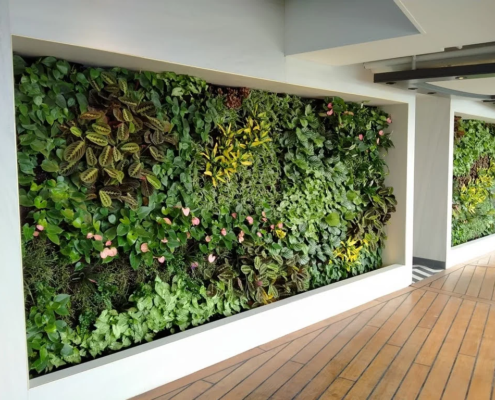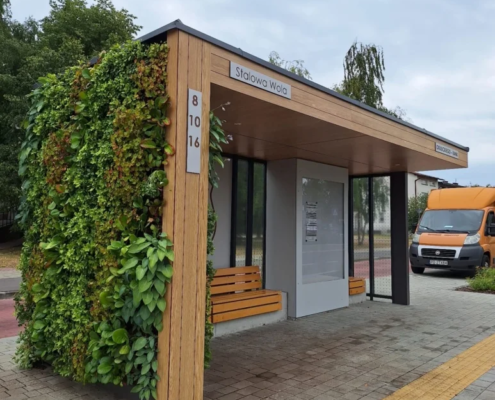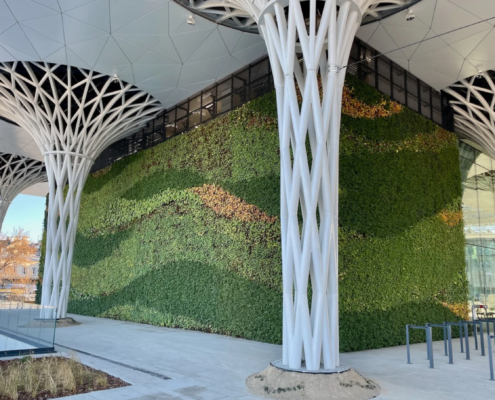Vertical Gardens on Estates: Green Space in Modern Construction
Contemporary housing estates are increasingly incorporating greenery into their designs, and one of the most innovative solutions is the vertical gardens. These vertical plant systems not only improve the appearance of buildings, but also offer numerous environmental and health benefits for their occupants.
What are vertical gardens?
Vertical gardens, also known as living walls, are a technique for growing plants on vertical surfaces. They usually consist of a metal frame, an irrigation system and modules in which different types of plants are placed. They can be installed both on the exterior facades of buildings and indoors, bringing nature into urban spaces.
Benefits of vertical gardens on housing estates
- Improving air quality: Plants in vertical gardens absorb carbon dioxide and emit oxygen, which contributes to cleaning the air of dust and other pollutants. In addition, they activate air ionisation, improving the wellbeing and immunity of the inhabitants.
- Microclimate control: Green walls help to maintain optimum temperature and humidity inside buildings, which can lead to lower air conditioning and heating costs.
- Noise reduction: Plants absorb sound, resulting in a reduction in ambient noise levels, creating a more comfortable living environment.
- Aesthetics and property value: Vertical gardens provide an original decoration that enhances the visual appeal of buildings and can increase property values.
- Biodiversity: The introduction of native plant species promotes biodiversity by creating habitats for insects and birds in an urban environment.
Examples of our projects in Poland
In Poland, more and more developers are choosing to implement vertical gardens in their projects. An example is the beautiful and modern Metropolitan Railway Station in Lublin, where a 290 m² green wall containing 27,000 plants has been installed. Species used for this project include, among others, Bergenia sercolistica, Common bumblebee, various varieties of Cowslip, Large-leaved Brunnera, Common periwinkle, HalyconCalathea fuchsia, Peperomia, Aglaonema, Anthurium and Epipremnum. This impressive installation makes a significant contribution to improving air quality and the aesthetics of public spaces.
Another example is the bus stops on Okulickiego Street in Stalowa Wola, where 96 plants such as Calathea, Peperomia, Aglaonema, Anthurium and Epipremnum have been planted on each square metre of green walls. This green initiative turns bus stops into more passenger-friendly spaces, improving their comfort while waiting for transport.
In private projects such as the cruise ship, vertical gardens are located in the restaurant, pool and coctail bar, covering a total of 50 m² of living screens with 4,500 plants. This allows passengers to enjoy the proximity of nature even at sea.
We also made a vertical garden in a luxury dental practice. A 28 m² green wall is placed in the lobby, containing plants such as Philodendron Brasil, Epipremnum Aureum, Epipremnum Marble, Fatsia Japonica and Philodendron Scandens. These plants create a calming atmosphere that helps patients to relax before visiting the dentist.
At the Malta Thermal Baths in Poznan, the vertical gardens cover an impressive 280 m² and include 8,000 plants. The entire project was completed in four weeks and significantly enhances the attractiveness of the facility, creating a pleasant environment for visitors to the pool.
Alternatives to vertical gardens
For spaces that do not have the capacity to install a full-scale vertical garden, there are alternatives such as ivy panels, green roofs, mobile plant walls or moss and plant paintings. These options also bring greenery indoors, improving air quality and the aesthetics of the surroundings.
Vertical gardens on housing estates - an aesthetic innovation
Vertical gardens on housing estates is an innovative solution that combines aesthetic qualities with ecological functionality. They introduce nature into the urban landscape, improving the quality of life for residents. Despite some challenges, related to costs and maintenance, their popularity in Poland is growing, which is indicative of a growing ecological awareness and a desire to create friendly living spaces.

